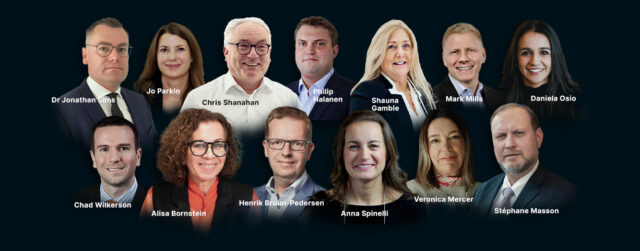The list of drivers to better understand global supply chains grows every day. Motivations range from increasing operational efficiencies, the ability to better respond to supply chain shocks, managing potential reputational risks through the exposure of unexpected issues with suppliers, as well as preparing for the wave of in-coming supply chain legislation.
So how can better quality supply chain data help with these challenges?
At Open Supply Hub, we begin our work from a clear starting point: if there’s no shared understanding of where global facilities are located, there’s certainly no understanding of the environmental or social conditions at those facilities. Historically, supply chain data has been hidden behind a lock and key which has benefited very few. In addition to this, at even as basic a level as name and address information for global production facilities, the quality of data has been surprisingly poor. What this means is that bad practices can lurk in the shadows undetected – practices which contribute to some of the fundamental issues of our time, such as deforestation, child and forced labour and the impacts of climate change.
To break it down, supply chains today have:
- Untrustworthy data: where data does exist, it’s riddled with errors and duplications and is not standardised. To put it bluntly: it’s a mess.
- Inaccessible information: as alluded to above, data is locked away in private databases, instead of being made available to all. This presents a huge hurdle to collaboration.
- Fee-based facility IDs: without freely available facility IDs, access to information is inequitable, which prevents truly seamless exchange between systems and stakeholders.
- Gaps in coverage: when data lives in silos like this, it creates difficulties in gaining a clear understanding of global supply chains.
The key to addressing this is high-quality, open supply chain data. This term “open data” is a precise one, with a technical definition: according to the Open Knowledge Foundation, “Open data is data that can be freely used, shared and built on by anyone, anywhere, for any purpose”. There are two key elements to openness:
- Legal openness: you must be allowed to get the data legally, to build on it and to share it
- Technical openness: there should be no technical barriers to using that data.
Through this seemingly simple mechanism of opening up supply chain data, many of the challenges described above are quickly addressed. Launching in late 2022, Open Supply Hub will be an accessible, collaborative, supply chain mapping platform, used and populated by stakeholders across sectors and supply chains.
It will provide:
- One common registry: cross-sector supply chain data collected in a single place, accessible to all.
- Reliable, current data: all data contributed to the platform will be cleaned and deduplicated by a matching algorithm, with each facility assigned an industry-standard ID. Continuously gathering and refreshing data from industry has the added benefit of keeping that data current which, in turn, leads to…
- Global collaboration: the user-generated dataset gives visibility into which organisations are connected to which facilities, accelerating collaboration.
We know this approach works from our experience of building the Open Apparel Registry (OAR). One compelling example of how the dataset has been used to highlight risks to investors came in the immediate aftermath of global production reopening after the pandemic lockdowns.
As India sought to re-open its economy and kickstart production, many labour laws were relaxed in the state of Uttar Pradesh, removing basic protections for workers relating to mandatory overtime, work breaks and more. Investors with holdings in major global fashion brands were able to run combination searches in the OAR to understand their exposure to risk in this area and adjust their investment strategies accordingly. Without access to this open data set, the ability to understand and divest from this investment risk would have been much more challenging during a time when global supply chains were in a constant state of flux.
As we look ahead to the raft of in-coming supply chain disclosure legislation, uncertainty remains high about what exact format these various reporting requirements will take. However, one thing that will not change is that data format and standardisation will be key to ensuring that the data being gathered and shared is of practical use to create change. If data is locked away in PDFs, tables embedded in websites or scattered between disparate databases, it becomes totally impractical to work with. The power of a centralised, open data repository lies in making data comparable, actionable and usable. That’s where creating change begins.

Author: Katie Shaw, Chief Programme Officer of Open Supply Hub











